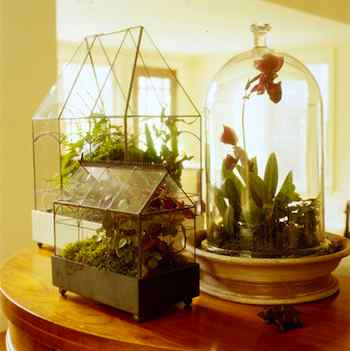- MENU
- HOME
- SEARCH
- WORLD
- MAIN
- AFRICA
- ASIA
- BALKANS
- EUROPE
- LATIN AMERICA
- MIDDLE EAST
- United Kingdom
- United States
- Argentina
- Australia
- Austria
- Benelux
- Brazil
- Canada
- China
- France
- Germany
- Greece
- Hungary
- India
- Indonesia
- Ireland
- Israel
- Italy
- Japan
- Korea
- Mexico
- New Zealand
- Pakistan
- Philippines
- Poland
- Russia
- South Africa
- Spain
- Taiwan
- Turkey
- USA
- BUSINESS
- WEALTH
- STOCKS
- TECH
- HEALTH
- LIFESTYLE
- ENTERTAINMENT
- SPORTS
- RSS
- iHaveNet.com

Terrariums
In a chance discovery in 1829, Dr. Nathaniel Ward found that certain plants can thrive in glass cases, leading to advances in botany and an interest in the object we know as the terrarium.
Growing plants under the protection of glass has been practiced for centuries in large outdoor greenhouses, but during the Victorian era in England the practice was taken a step further and brought indoors.
The Victorians were fascinated with the natural world, and they tried to learn everything they could about it. Plants and plant discoveries played a prominent role in their desire for the new and exotic. Plant hunters were the rock stars of the time, leading expeditions to distant locales around the globe. Their wild adventures fascinated the public, fueling excitement about the undiscovered world of botany.
The challenge for these explorers was getting the plants home alive -- and keeping them alive once they got there. Collected specimens spent months on ships and often arrived dead due to salt spray, lack of light or lack of fresh water.
But a breakthrough came with an accidental discovery by a London physician that made it possible not only for plants to survive these long journeys, but to continue thriving once they got home. In 1829 while studying a moth cocoon in a sealed jar, Dr. Nathaniel Ward accidentally noticed some ferns growing in a small amount of soil at the bottom of the jar. The moist environment created the perfect condition for the plants to thrive.
Ward hired a craftsman to build sealed boxes made of glass and wood, as a way to keep plants alive in dry Victorian homes, keeping them safe from what he guessed were ambient toxins in the air of industrial London. Thus the terrarium was invented. Antique specimens of "Wardian cases" as they came to be called are still available and highly sought after by collectors.
Growing plants in glass enclosures is still popular, and they are a wonderful way to observe small tropical plants. They create the perfect habitat for many ferns, tropical mosses, begonias and miniature orchids.
Making your own terrarium is easy
You can use any large glass jar, old aquarium with a glass top, or cloche with a pot underneath. It is a great project to do with kids, and a fun way to learn about a mini-ecosystem.
The materials you will need are: a glass container such as an old aquarium or a 2-gallon jar; pebbles; activated charcoal; sphagnum moss; potting mix; assorted terrarium plants, such as ferns, baby tears, moss, pitcher plants, orchid and club mosses; and miniature figurines, shells or other decorative elements.
The tools you will need are: chopsticks or long tweezers; a long-handled spoon; scissors; a paper funnel; and a spray mister.
Clean the glass container and add 1 to 2 inches of pebbles for drainage, a thin layer of activated charcoal for filter, and a thin layer of sphagnum moss to keep soil from getting into the filter.
Using a paper funnel, add potting mix. Build up soil where desired. Create hills and valleys to add visual interest. Place the plants in terrarium, but do not dig beneath the moss layer. Leave enough room for the plants to grow above the soil line.
Use long handled tools and tweezers to adjust the placement of the plants. Add statues, ornaments or figurines, as desired.
Water lightly to moisten soil and mist plants. Cover with glass lid or clear material
Place the mini-ecosystem in a bright location where it will receive indirect light. If the terrarium dries out, mist as needed.
AUTOS | HOBBIES | EDUCATION | FAMILY | FASHION | FOOD & RECIPES | HOME DECOR | RELATIONSHIPS | PARENTING | PETS | TRAVEL | WOMEN
© Tribune Media Services